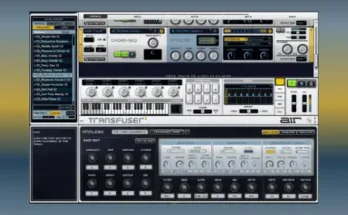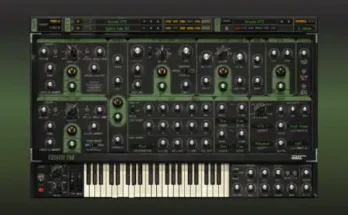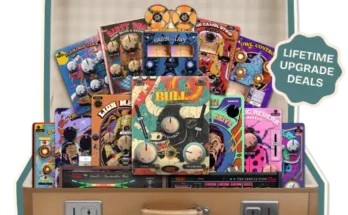Team R2R | July 22 2018 | 3 MB
Listen: Valhalla DSP has come unstuck in time.
ValhallaVintageVerb is a postmodern reverb plugin, inspired by the classic hardware digital reverbs of the 1970s and 1980s.
17 Reverb Algorithms:
Concert Hall. Based on the hall algorithms of the late 1970s and early 1980s. Huge spatial image, echo density that can be adjusted from very sparse to very dense, and lush chorusing modulation.
Bright Hall. Similar to the Concert Hall algorithm, but with a brighter initial sound, and deeper and lusher modulation.
Plate. Inspired by early 1980s plate algorithms. Highly diffuse, bright initial sound, high echo density, lush chorused modulation.
Room. Emulates the sound of early 1980s room algorithms. Medium diffusion/early echo density, somewhat darker sound, chorused modulation.
Chamber. A transparent and dense algorithm. Highly diffuse, high echo density, less coloration than Plate/Room algorithms, chorused modulation.
Random Space. This generates DEEP and WIDE reverbs, with a slow attack, and more diffusion than the late 1980s algorithms that inspired it. The modulation uses internal delay randomization, to reduce metallic artifacts without the pitch change that can occur in the algorithms with chorused modulation.
Chorus Space. Same as Random Space, but with the delay randomization replaced with lush chorused modulation.
Ambience. Combines time varying randomized early reflections with a full-featured reverb tail, with the balance between early and late reverb controlled by the Attack knob. Useful for adding “air” to drums, vocals, and any place where a reverb should be felt but not heard.
Sanctuary. Inspired by a classic German digital reverberator from the 1970s. Discrete early reflections, a dense late reverb that rapidly builds in echo density, lush detuned modulation. Sanctuary incorporates the bit reduction and floating-point gain control used in the A/D and D/A convertors of the early digital hardware.
Dirty Hall. A fresh look at the Concert Hall algorithm, with the goal being to emulate the strange fixed point and convertor artifacts of early 80s reverb hardware. Lusher and denser than the Concert Hall algorithm, with loads of warmth and grit on tap, for a roughly hewn beauty. Plug in your analog synth and send yourself into retro sci-fi heaven.
Dirty Plate. All the warm and gritty artifacts of Dirty Hall, applied to an old-school digital plate algorithm. High echo density, wide stereo image, and just the right amount of metallic sheen. Drums come alive when sent through Dirty Plate.
Smooth Plate. The complete opposite of Dirty Plate. Smooth decay at all settings, from short to near-eternal. Lush chorusing, with none of the metal found in Dirty Plate. The most transparent and naturalistic reverb in ValhallaVintageVerb. Crank up the Size parameter, and float off into space!
Smooth Room. A smooth and transparent room reverb, in the Smooth Plate style. Useful for emulating the Room/Hall algorithms of late 1980s hardware, as well as getting clear reverberation with low amounts of coloration.
Smooth Random. A random room/hall algorithm, with transparent decays that can be adjusted from tiny to huge. Randomized delay modulation, similar to Random Space, but with a much tighter initial attack and smoother decay. A good “jack of all trades” reverb algorithm.
Nonlin. Gated, reverse, and nonlinear reverbs are all on tap here. Use Size to control the duration of the reverb, and Attack to smoothly interpolate between a truncated reverb, a “flat” gated decay, and huge reverse reverbs. Lush chorusing modulation on tap, for your shoegazing needs.
Chaotic Hall (new in 1.7.1). A chaotic take on the Concert Hall algorithm, with modulation and saturation artifacts inspired by classic tape echoes. Lush and warm, with subtle wow and flutter chorusing that adds depth without making your reverb seasick.
Chaotic Chamber (new in 1.7.1). Smooth and chaotic at the same time. A relatively “dimensionless” reverb algorithm, that adds depth to your sound. Wow and flutter modulation, subtle tape saturation. Use this algorithm on pretty much any input, and it will sound good.
[toggle title=”Home page”]https://2shrink.com/vMc1u[/toggle]

http://alfalink.to/22852db60a3406b42630
Please REPORT in Comment Broken Links




